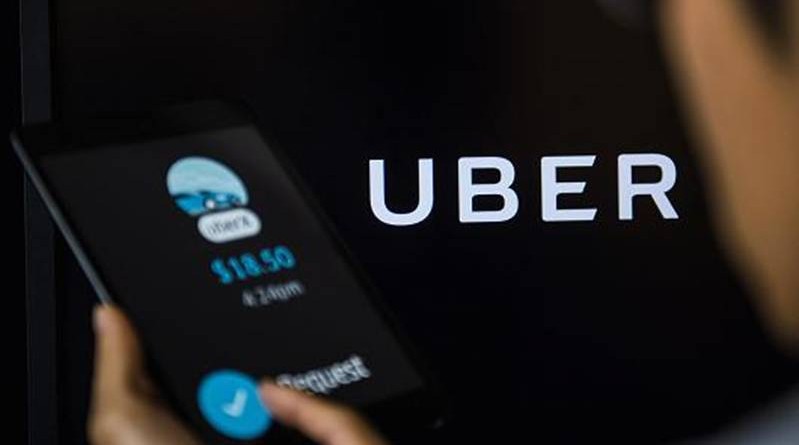Start-ups all over the world are trying to topple Uber
Its still-sky-high valuation shows just how much money investors see in the ride-hailing business. Uber’s not the only one that scored more cash over the past year. Grab got the largest single financing round in Southeast Asia in 2017. CapitalG, an investment arm within Google parent Alphabet, led a funding round of at least $1 billion for Lyft. Didi Chuxing raised more than$4 billion in its latest round of funding.So it’s not surprising all four of these companies are in the top 10 in this year’s Disruptor 50 list.
These investments — from venture capitalists and giants like Apple and Google — could pay off big as more consumers opt to order rides on apps and forgo rental cars and taxis.
But as ride-hailing companies scale their networks of drivers and users around the world, they are starting to encroach on each other’s turf. That could force them to start to differentiate themselves from the competition.
Turning a profit, understanding the local market, playing nice with SoftBank and balancing jobs with new technology could determine which start-up has the leading edge.
The rivals of ride-hailing — Didi Chuxing, Grab, Lyft and others — are all likely to come to the forefront as Uber prepares to go public, something CEO Dara Khosrowshahi said could happen in 2019. Uber will have to prove to investors that it can beat the competition, despite past struggles like sexual harassment accusations, a cybersecurity breach and regulatory scuffles.
Customers have already shown that they’re willing to jump from one app to another at the first sign of trouble: Lyft said this month it has 35 percent of the national ride-sharing market, up from 20 percent 18 months ago.
“Uber’s brand image took an even bigger hit than expected as it grappled with a series of scandals and PR disasters in 2017,” Shelleen Shum, forecasting director at eMarketer, said in a statement this month.
Here are some of the other factors that could separate the winners from the losers in the ride-hailing industry.
An end to the cash burn
Ride-hailing companies lose money — and lose a lot of it. And that could be made much worse if regulations and labor disputes go sideways.
Investors have been left to determine which companies are most at risk of financial failure and which winning opportunities will be worth the investment.
Uber has been one of the most forthcoming companies when it comes to its financials, disclosing earlier this year that its losses jumped 61 percent in 2017, to $4.5 billion. That’s despite the fact that much of its core workforce of drivers are not considered payrolled employees of the company (instead, they are contractors in many regions). Uber has also managed to avoid many of the limits that face taxi companies, such as medallion systems — the requirement that vehicles be painted bright yellow paint and regulated by the Taxi and Limousine Commission.
Uber’s super-high private-market valuation has had its fair share of skeptics over the years, especially given that it’s yet to turn a profit. But growing fast — and getting to new markets first — has proved key to improving Uber’s market share and revenue.
The question is, is it the wealthy first-world markets or the rapidly growing developing markets that hold the most profit potential?
Uber investor Bill Gurley has expressed optimism on Uber’s contractor-driven workforce and is confident that ride-hailing companies will benefit as the economy hits “peak car.” But he has also pointed out the potential of markets like China and Singapore (home to Uber’s rivals, Didi Chuxing and Grab).
“You have a single-minded government that can make decisions implicitly. You have a much higher death rate per mile driven … so you have more of an incentive,” Gurley said at the Launch Festival in San Francisco last year. “There’s zero chance that China can evolve the way America did as far as cars per household — it’s just impossible; there’s no roads.”
Goldman Sachs also said last year that “wealthy Asian capitals” are likely to become epicenters of ride-hailing growth, predicting that the number of cars on the road will peak in 2030 and that the ride-hailing will grow eightfold by then.
Localization
While the opportunity in foreign markets is clear, the local laws and customs often are not — Uber has struggled, for instance, to keep up with the licensing laws in the UK and Europe. That’s where local players could have a long-term advantage over market leaders like Uber.
There are reasons the ride-hailing business is hard to scale internationally — and why so many are trying. In India, for instance, only 3 percent to 5 percent of the population own cars. But of the 1.25 billion population, 800 million are millennials, and the smartphone market is growing like wildfire.
India’s Ola is an example of a company that operates totally differently than rival Uber — offering its Ola Lite software for low internet connectivity and more than a dozen different transportation options with a massive range of prices.
Apple CEO Tim Cook chose Didi as one of Apple’s rare mega-investments in part because it was a way to understand the Chinese market — which has proved nearly impossible to crack for many American technology firms, due to its closed ecosystem and unique, powerful consumer base.
Russia’s Uber equivalent, owned by Yandex, is another, smaller example of a company that has thrived within the confines of strict technology regulation. Rides on the platform are up 222 percent year-over-year. Indonesian motorcycle-hailing company GoJek is valued at more than $5 billion, according to PitchBook.
Still, Uber’s Khosrowshahi said in February that he plans to continue investing heavily in foreign markets. Like his previous company, Expedia, Khosrowshahi has also expanded the Uber to be more door-to-door, offering alternative transportation modes like rental cars, transit tickets and bikes, and cash payment options that might be attractive in different markets.
“We as a company need to have a balanced profile in terms of growth and investment. There are developed markets that we are going to continue to invest in that are going to be more profitable … and we should actively be investing in markets like India and Latin America that have huge growth ahead of us,” he said, according to Reuters.
Pressure to buy rivals — or get bought
Japanese telecom conglomerate SoftBank has emerged over the past two years as a major player in the ride-hailing industry, acquiring a big chunk of Uber’s stock, investing in Ola and joining portfolio company Didi in investing in Grab (which agreed to acquire Uber’s Southeast Asia business).
Suddenly, it seems like SoftBank — and its aggressive CEO, Masayoshi Son — is playing both sides of the market by funding the cash-strapped ride-hailing industry. Rajeev Misra, the CEO of SoftBank Vision Fund, has made it clear that these investments don’t amount to a bet against Uber: “I believe the future of Uber is not just transportation but also food delivery, also insurance, car leasing, all kinds of ancillary businesses globally, and that’s what the platform has to do,” he told CNBC earlier this year.
The question is, does SoftBank expect its complex web of ride-hailing investments to be consolidated — and if so, who buys whom?
At least for now, Son has said he expects his ride-hailing investments to seek IPOs. But there has already been a wave of businesses changing hands between Uber and its rivals.
“If management at Uber, Didi or Grab were to talk with one another and come to an agreement and in so doing raise shareholder value, we will study that,” Son has said, according to The Wall Street Journal. “But we will not force them to do anything.”
The future of transportation is coming fast — and not everyone may keep up
Former Uber CEO Travis Kalanick once described autonomous vehicles as an existential threat to his business model — and that business is becoming viciously fierce as each player tries to make it to market first. Elon Musk said as much on his recent conference call with investors.
“I think we’re really well positioned,” Musk said, according to TechCrunch, for having “ultimately millions of shared, autonomous electric vehicles.”
Musk’s comments highlight the fact that companies that aren’t considered ride-hailing companies today could pose a competitive challenge in the not-too-distant future.
Legacy automakers are hard at work on self-driving cars, and companies like Apple and Google have also looked at the space. Indeed, Alphabet’sWaymo and Waze already have small transportation programs.
Then there are some more futuristic, far-off bets, such as Hyperloop technology, aerial vehicles and tunnels.
Most ride-hailing companies have tried to future-proof themselves by doing self-driving car research, and Uber even has a flying taxi idea. But not only are they competing with some of the most advanced, well-heeled groups working today — there’s also the problem of protecting drivers from being displaced by new technology (a problem that non-ride-hailing companies won’t have to face).
“Uber and the gig economy both exhibit a clear duality,” the Economic Policy Institute wrote this month. “On the one hand, these platforms engage many participants, though most do so for supplementary income on a very part-time basis and frequently for a limited time. On the other hand, these platforms have a core group who are full-time, and year-round workers who provide a large share of the services to consumers provided by these platforms.”
As more work is automated, it could displace the “core group” of drivers that have fueled ride-hailing’s growth. Dealing with that transition could be crucial to the longevity of ride-hailing companies.
When autonomous vehicle saturation peaks, U.S. drivers could see job losses at a rate of 25,000 a month, or 300,000 a year, according to a report from Goldman Sachs Economics Research (although truck drivers would be more affected than taxi drivers). Uber has countered with research that indicates self-driving trucks could improve employment.
Nonetheless, Uber’s quest to master future technologies could present a challenge for the company, which has recently promised to soften Kalanick’s stance:
“Look, this is the way the world is going,” Kalanick said in 2014 at the inaugural Code Conference. His explanation to Uber drivers who might lose their jobs down the road? “If Uber doesn’t go there, it’s not going to exist either way.”
BY Anita Balakrishnan, News Associate, CNBC.COM

Anita Balakrishnan is a CNBC News Associate covering technology and breaking business news.
Prior to joining CNBC, Balakrishnan held an internship with USA Today’s Money Section as part of the Dow Jones News Fund Internship Program, where she covered personal finance, media consolidation and the U.S. economy.




